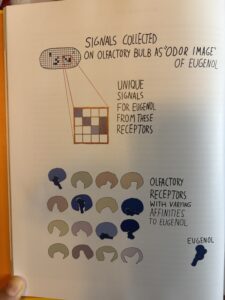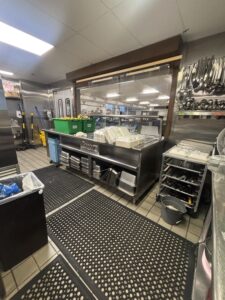Blog #2: My Journey Continued…
Maia B V -
Hey fans,
Welcome back to another fantastic and super busy week. Let’s dive right in!
Monday: Similar to last week, I have 3 shifts a week, Monday being my early morning one (boo). However, I’m finally leaving the prep stations and moving on to some more exciting kitchen actions! This day we made an abundance of different breakfast foods including the most delicious buttermilk pancakes that I got to HEAVILY taste test (and even brought some home).
Tuesday: On this day I got to do some more kitchen work, of course, but also had some meetings with admin where I got to talk about how to improve some of their vegan and vegetarian options to include more variety and even shared my first brainstorm ideas to a new recipe I will be testing out and solidifying this week!
My Recipe Creation Journey: Over the week, I went back to find notes I had taken from a college level nutrition course and wrote down some key aspects of what makes food “nutrient/calorie-dense”. Here’s what I’ve gathered: As we all probably know it’s important to include carbohydrates ( primary energy source, fuels brain and muscles), Proteins (Composed of amino acids with an amine (-NH₂) and carboxyl (-COOH) group; key elements are carbon, hydrogen, oxygen, nitrogen (N), and sometimes sulfur (S) -> serves for muscle repair, enzyme function, immune support), Fats/Lipids (Composed of glycerol and fatty acids (saturated, monounsaturated, polyunsaturated); key elements are carbon, hydrogen, and oxygen —> serves as energy storage, cell membrane integrity, hormone production), and of course the micronutrients needed for health as well (iron, calcium, vitamin B, ect.)
Now, the reason it’s more difficult to provide nutrient dense options without meat to under-housed communities that are most likely missing a lot of nutrients and meat/dairy is a “complete protein”. This means that meat naturally contains all nine essential amino acids in sufficient amounts for human needs, which you can rarely find in any fruit, vegetable or non-meat protein. HOWEVER, there are ways to not include meat/dairy and have a calorie dense meal AND include “complete proteins”. This is done by complementing different foods with each other, for example:
- Combine Legumes + Whole Grains: Creates a complete protein (e.g., rice + beans, lentils + quinoa)
- Some foods also naturally contain all 9 amino acids including: tofu, tempeh, edamame, Quinoa, Amaranth, Buckwheat, Hemp seeds, Chia seeds, and Spirulina.
This means for vegan dishes combining any combination of these foods into a meal will be just as calorie dense as meals with meat/dairy and will include all the fats, carbs, proteins, and nutrients needed to feel satiated and be healthy.
Additionally for vegetarian foods just including some sort of dairy for example, yogurt, will satisfy the protein and along with the other nutrient groups will also create nutrient dense meals.
Other important things to mention that I did in the past week include;
- Chapter 2: “Flavor-ama”: This chapter talked about how the “smell of a molecule” works related to test receptors. Since I’ve written so much I’ve put a picture down below of a visual of how smell works.
- I was invited to create a vegan and vegetarian hors d’oeuvres for Miriam’s Kitchen volunteer appreciation day and am currently researching some recipes to include and will keep you guys updated on the solidified menu!
Thanks for reading this week’s blog and stay excited for next week’s update on all the projects!
As promised, more exclusive content put down below <3




Comments:
All viewpoints are welcome but profane, threatening, disrespectful, or harassing comments will not be tolerated and are subject to moderation up to, and including, full deletion.